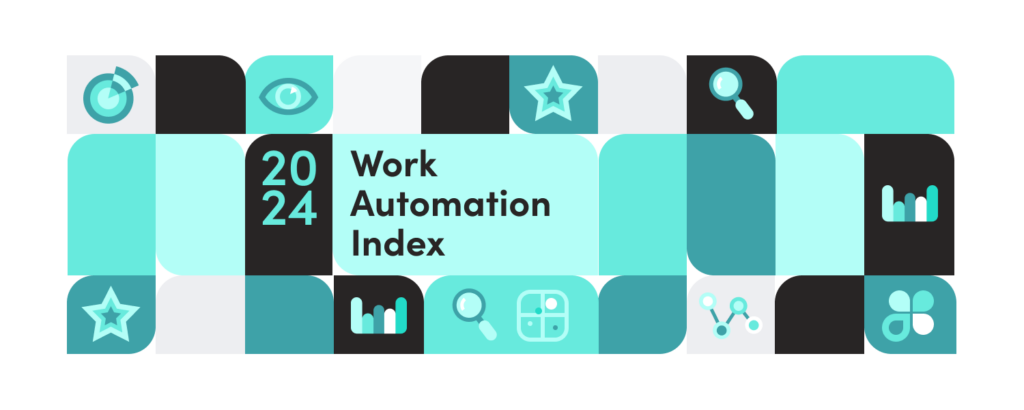In 2023, we experienced economic headwinds and the excitement of Artificial Intelligence. As businesses find themselves caught in the middle of this transformative era, it is an exciting time to release our third Work Automation Index.
The Index is our yearly report detailing real data across sectors to see how businesses at the forefront are utilizing automation and AI. This year’s data is based on real automation use cases anonymized from over 1,000 organizations.
The report showcases a year marked by unprecedented change, as companies rapidly embraced AI, with their investments yielding remarkable results. We saw a staggering 500% increase in the adoption of automated processes with generative AI over the last year alone.
Other key takeaways include:
- 44% of all automated processes are built outside of IT.
- Multi-department automation is at an all time high.
- Customer retention is the #1 growing strategic priority for automation.
- Revenue and IT Ops lead generative AI adoption.
- Generative AI is used in 400% more business processes than just a year ago.
Work Automation Index 2024 provides a comprehensive analysis of how companies are not only leveraging new technologies but also are shifting the way they work, positioning AI and low-code automation as natural partners in day-to-day operations. These Low-Code Language Models are “digital brains” within orgs that supercharge business processes, empowering organizations to rethink traditional approaches and embrace a more efficient, agile, and intelligent way of working.
Real-world data collected in 2023, anonymized to protect privacy, forms the foundation of the report. It offers key insights into the strategies adopted by companies on the leading edge AI Automation, and it can provide a valuable roadmap for organizations in transition.
In addition, this year we are providing a deep dive analysis on the data from Workato’s own head of research, Massimo Pezzini, previously a VP Distinguished Analyst for Gartner.
You can see the full report, as well as Massimo’s detailed analysis, at this link.
